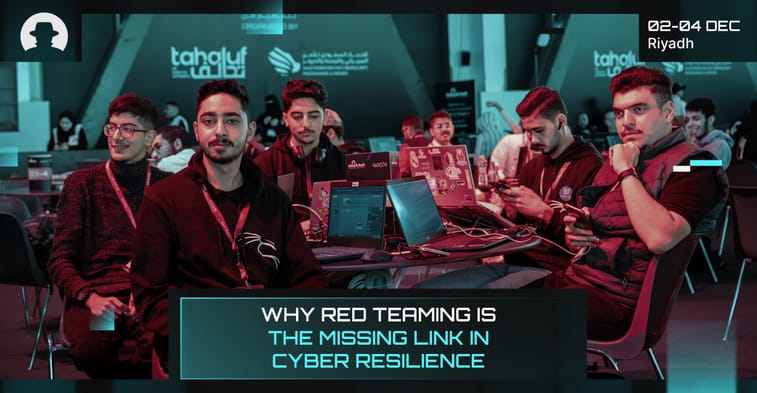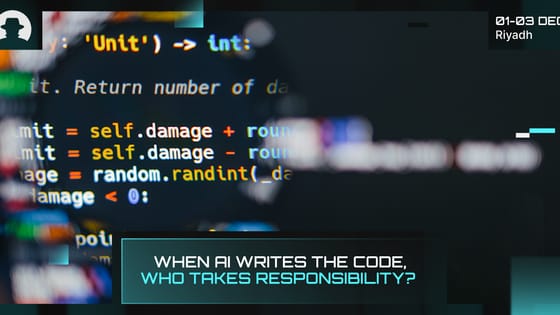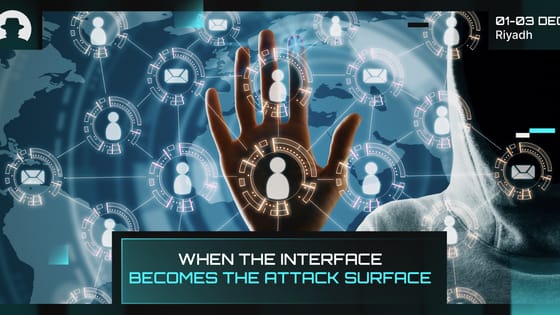
Why identity protection has to level up in 2026
Identity fraud in 2026 is AI-driven, industrial and costly. Learn how deepfakes, fraud rings and new cyber insurance rules are changing identity protection.
Read More
Many organisations treat cybersecurity like an insurance policy: patch, monitor, repeat. But rising attack sophistication means the true differentiator is offensive insight – red-teaming – coupled with strong blue-team discipline.
Back in 2023, Aon’s global risk management survey ranked ‘Cyber Attack / Data Breach’ as the number one risk globally, ahead of business interruption, supply chain or talent risks. But today, many of those organisations are still under-prepared to absorb a large-scale cyber event. And Aon’s most recent 2025 report warns that reputation events resulting from cyber incidents can erode shareholder value by approximately 27%, up from 9% in prior years.
Cybersecurity practitioners at Black Hat MEA talk about this over and over again. We know cyber is a top risk for organisations across industries, yet resilience remains aspirational, not embedded.
And PwC’s 2025 global digital trust insights report emphasises this. The survey of 4,042 business and tech executives found that only 2% of organisations have implemented cyber resilience actions across all areas assessed.
Meanwhile, regulatory pressures are pushing budget increases: 96% told PwC that regulation has intensified their cybersecurity investments over the past 12 months.
So boards and execs are acknowledging the threat, but routine programs and compliance alone can’t uncover real gaps. And that’s where red teaming comes in.
If you’re leading a large organisation, don’t think of red teams as adversaries – but as an opportunity to stress test your blue defence. A red team attack simulates a real threat actor (from reconnaissance, to lateral movement, to data exfiltration); and that allows you to surface latent weaknesses.
What red teams reveal that audits don’t:
In many breach simulation engagements, the most valuable output is not the ‘attack path found’ but the narrative (how an attacker would think, move, and adapt) which can reshape defence posture.
And we need this narrative; because blue teams, operating in steady state, can get tunnel vision. They see alerts, respond and patch; but rarely get challenged with unexpected routes that a real attacker would explore. A red team forces that cognitive stretch.
If you want red and blue to deliver maximum value, they have to be aligned. Here’s how to weave them together:
A real-world example might look like this: a red team finds that an ‘unused’ developer server had stale credentials. The blue team, now aware, modifies their alert rules to flag access attempts and prioritise that server in patch cycles. Over time, the path disappears. That cycle (attack to detection to response to fix) is the heart of resilient growth.
Offensive and defensive aren’t in opposition; we need to see them as complementary limbs in one organism. When red and blue teams operate in unison, your organisation is far better placed to learn, adapt, and fortify.
Join the newsletter to receive the latest updates in your inbox.

Identity fraud in 2026 is AI-driven, industrial and costly. Learn how deepfakes, fraud rings and new cyber insurance rules are changing identity protection.
Read More
New research from Veracode and Gartner shows that while AI is accelerating software development, it’s also accelerating risk.
Read More
Three recent campaigns (Tsundere, Matrix Push C2, and Sturnus) show attackers shifting command-and-control and data theft into places we treat as harmless UX plumbing.
Read More